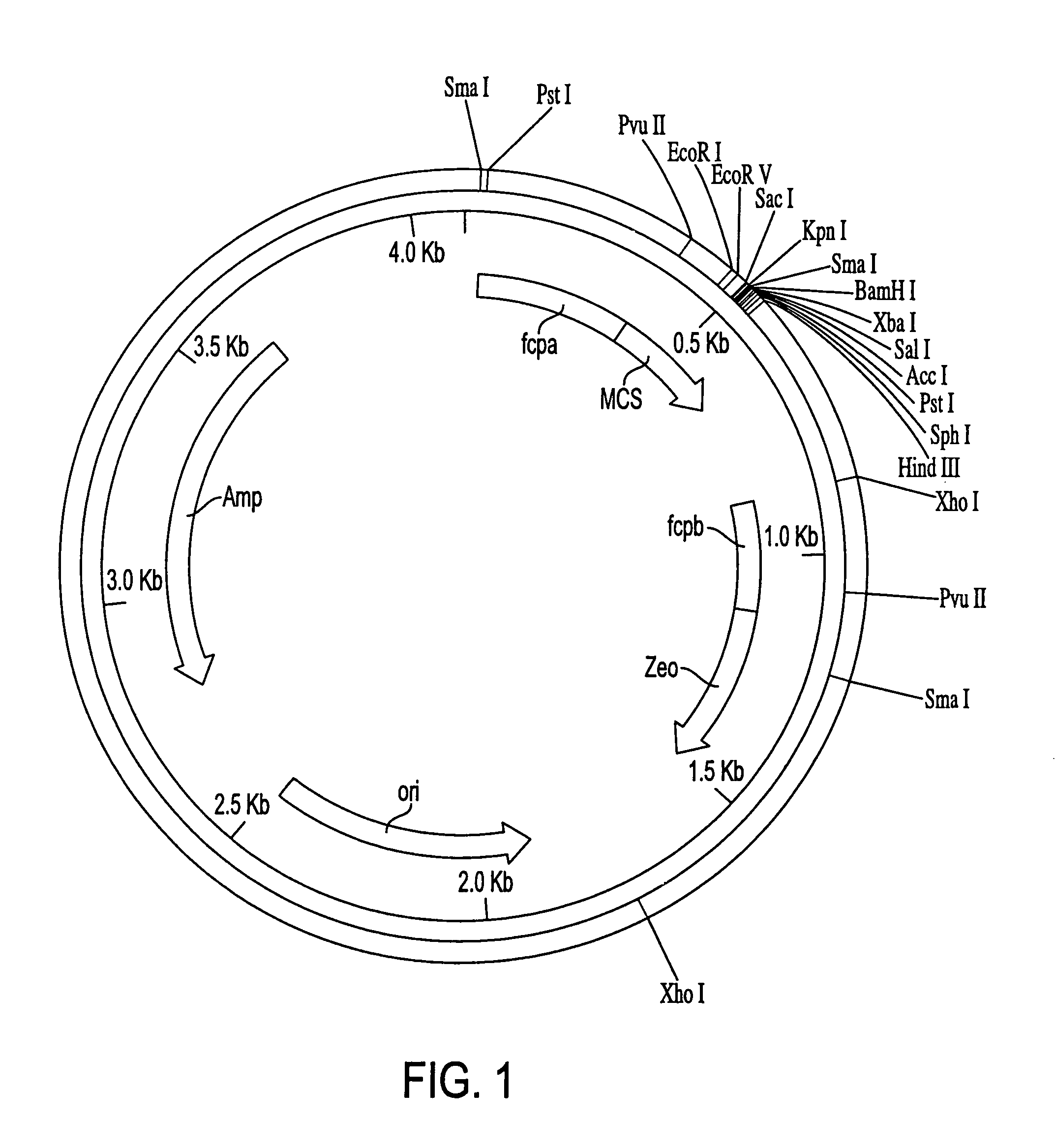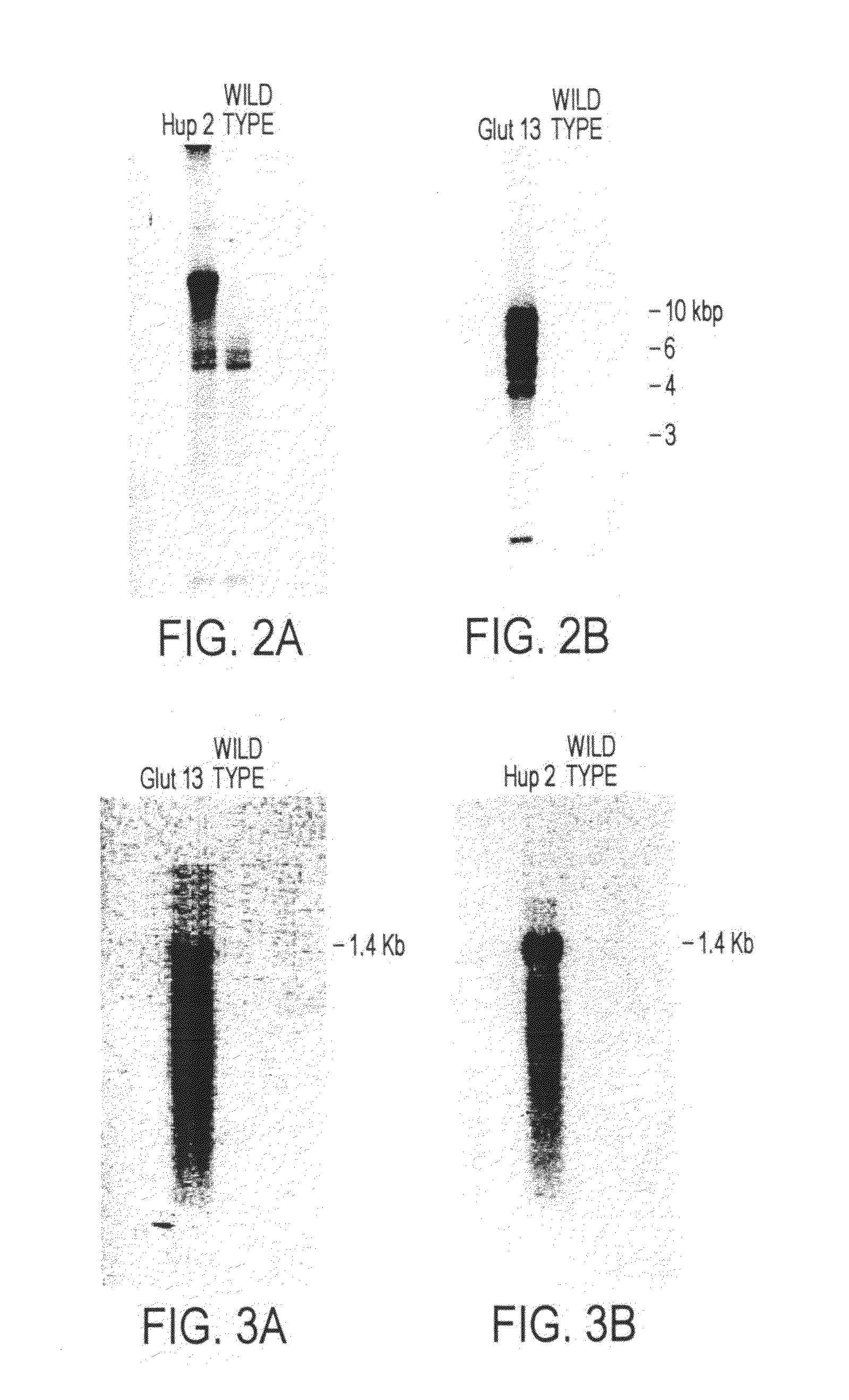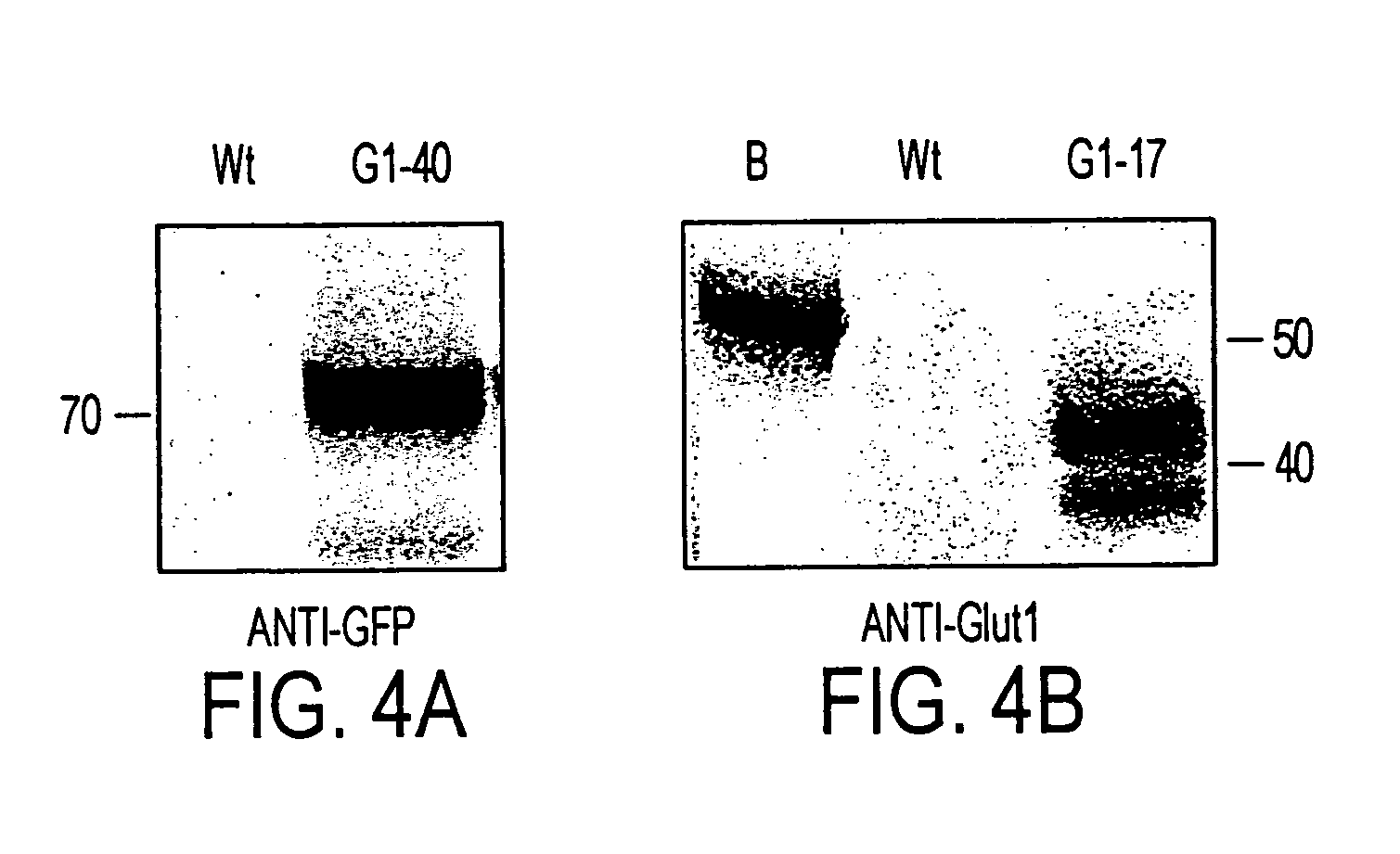Trophic conversion of obligate phototrophic algae through metabolic engineering
a technology of metabolic engineering and trophic transformation, applied in the field of genetic transformation of algae, can solve the problems of difficult to exclude contaminating organisms in an open pond, low biomass, and inability to utilize exogenous organic compounds (such as glucose, acetate, etc.) as energy or carbon sources for algae,
- Summary
- Abstract
- Description
- Claims
- Application Information
AI Technical Summary
Benefits of technology
Problems solved by technology
Method used
Image
Examples
example 1
Antibiotic Sensitivity in Diatoms
[0119]The diatoms Phaeodactylum tricornutum, Cylindrotheca fusiformis, Cyclotella cryptica and Nitzschia alba were extensively tested for sensitivity to a series of antibiotics for which resistance genes are available, and the lowest concentrations which completely abrogate growth were determined for each antibiotic (Table C). Most of the antibiotics had no significant effect on growth or were effective only at very high concentrations compared to their effectiveness in abrogating growth of other eukaryotic organisms. These include antibiotics such as G418, Hygromycin, Kanamycin and Spectinomycin, which are routinely utilized for selection of other eukaryotic organisms.
[0120]For the diatoms tested, only the antibiotics zeocin and phleomycin resulted in cell death in 100% I.O. media (see Example 4 for description of media and growth conditions).
[0121]It was found that by lowering the concentration of the media to 50% I.O. or less the sensitivity of th...
example 2
P. tricornutum is Incapable of Heterotrophic Growth
[0125]To confirm that P. tricornutum was incapable of heterotrophic growth on glucose, cells were repeatedly plated on glucose containing solid media and placed in the dark. Cells typically divided up to 1-2 times over 24 hrs, then stopped growth. No additional divisions were evident after 1-2 months. Cultures were also checked for glucose transporter activity. No detectable uptake was evident even after 4 hours of incubation. Cells were also plated on 16 different hexose or related sugars (arabiose, cellobiose, fructose, fucose, galactose, gluconate, lactose, maltose, maltobiose, mannose, meliblose, nibose, sorbitol, suclose, trehalose, xylose), with no detectable growth.
example 3
Generic Mutation does not Enable Heterotrophic Growth of P. tricornutum
[0126]To confirm that P. tricornutum is not capable of spontaneous mutations that result in the ability to grow in the dark on glucose, 1010 control cells were plated onto glucose-containing solid media. No spontaneous colonies formed on glucose. To confirm that the transformation procedure and / or insertion of foreign DNA could not result in trophic conversion, approximately 100 cell lines were transformed with pPha-T1 containing a variety of heterologous genes (uidA gfp, nat, and nptII), but not glutl or hupl, and these transformed cell lines were tested for growth on glucose in the dark. None grew on glucose.
PUM
| Property | Measurement | Unit |
|---|---|---|
| volume | aaaaa | aaaaa |
| volumes | aaaaa | aaaaa |
| concentration | aaaaa | aaaaa |
Abstract
Description
Claims
Application Information
 Login to View More
Login to View More - R&D
- Intellectual Property
- Life Sciences
- Materials
- Tech Scout
- Unparalleled Data Quality
- Higher Quality Content
- 60% Fewer Hallucinations
Browse by: Latest US Patents, China's latest patents, Technical Efficacy Thesaurus, Application Domain, Technology Topic, Popular Technical Reports.
© 2025 PatSnap. All rights reserved.Legal|Privacy policy|Modern Slavery Act Transparency Statement|Sitemap|About US| Contact US: help@patsnap.com



